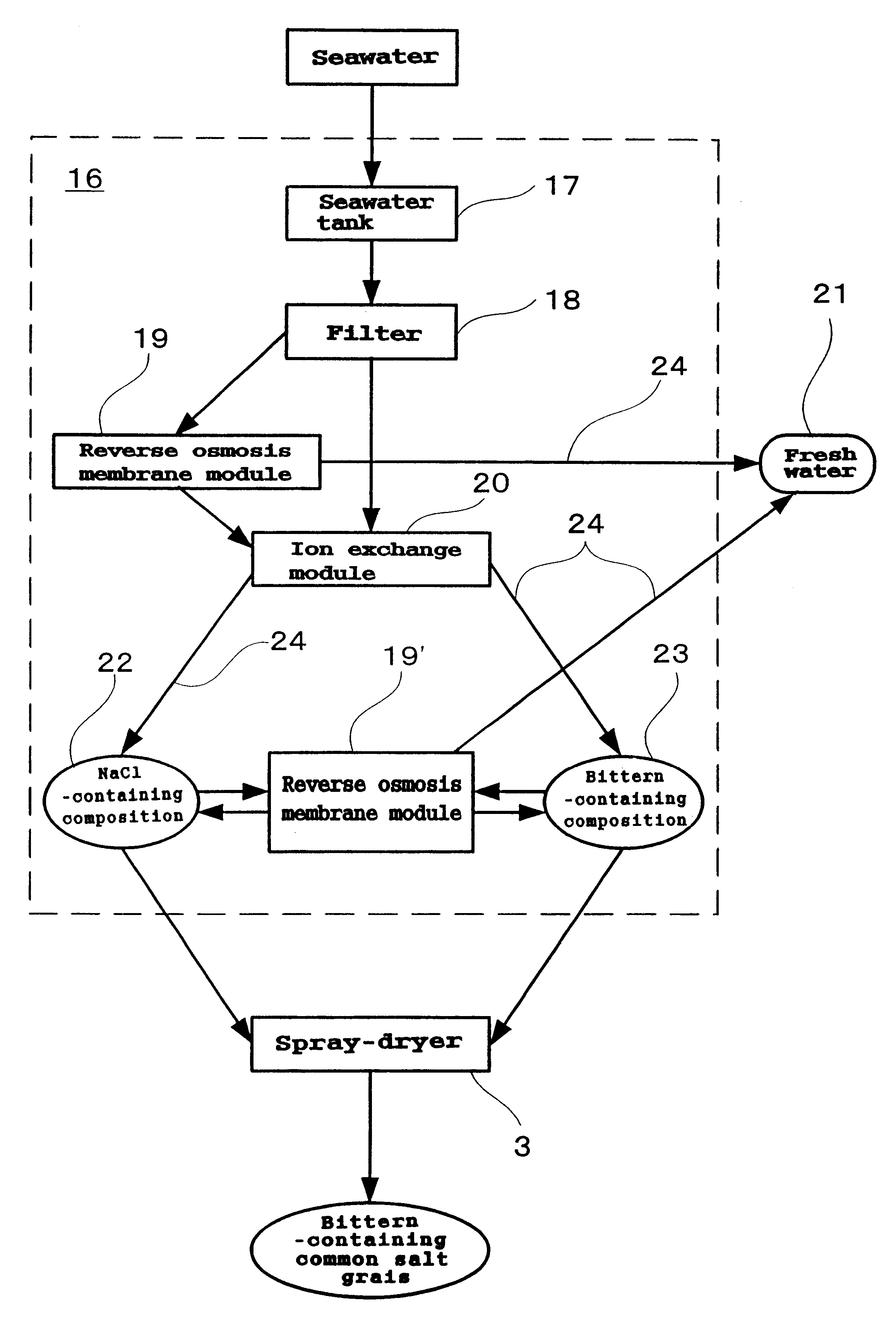Bittern-containing common salt grains and process for preparing the same
a common salt and grain technology, applied in the field of common salt, can solve the problems of short shelf life and difficulty in handling, and achieve the effects of improving shelf life and ease of handling, low tendency to coagulation, and high efficiency
- Summary
- Abstract
- Description
- Claims
- Application Information
AI Technical Summary
Benefits of technology
Problems solved by technology
Method used
Image
Examples
example 1
(1) In accordance with the system illustrated in FIG. 7, a NaCl-containing composition and a bittern-containing composition are recovered from 20 L of seawater. Thus, 20 L of seawater is filtered through a membrane filter to remove sand and other solid matter and the resulting filtrate is fed to a filtration device (SO-252-2NN, Water Treatment Ace Co., Ltd., Japan) equipped with a reverse osmosis membrane to fractionate it into freshwater and a concentrated salt-containing water. The freshwater is stored in the freshwater recovery section, while 12 L of the salt-containing water is fed to an electrodializer (AC Lyzer G-4, Asahi Kasei, Japan) equipped with an ion exchange membrane (cartridge) rejecting NaCl selectively to fractionate it into a NaCl-containing fraction and a remaining (bittern-containing) fraction.
Using the NaCl-containing fraction obtained above as an aqueous coating solution and the bittern-containing fraction as an aqueous bittern-containing composition solution co...
PUM
| Property | Measurement | Unit |
|---|---|---|
| RH | aaaaa | aaaaa |
| temperature | aaaaa | aaaaa |
| concentration | aaaaa | aaaaa |
Abstract
Description
Claims
Application Information
 Login to View More
Login to View More - R&D
- Intellectual Property
- Life Sciences
- Materials
- Tech Scout
- Unparalleled Data Quality
- Higher Quality Content
- 60% Fewer Hallucinations
Browse by: Latest US Patents, China's latest patents, Technical Efficacy Thesaurus, Application Domain, Technology Topic, Popular Technical Reports.
© 2025 PatSnap. All rights reserved.Legal|Privacy policy|Modern Slavery Act Transparency Statement|Sitemap|About US| Contact US: help@patsnap.com



